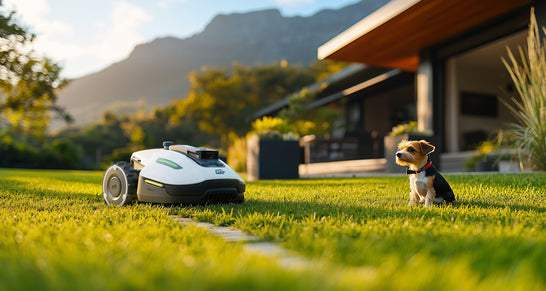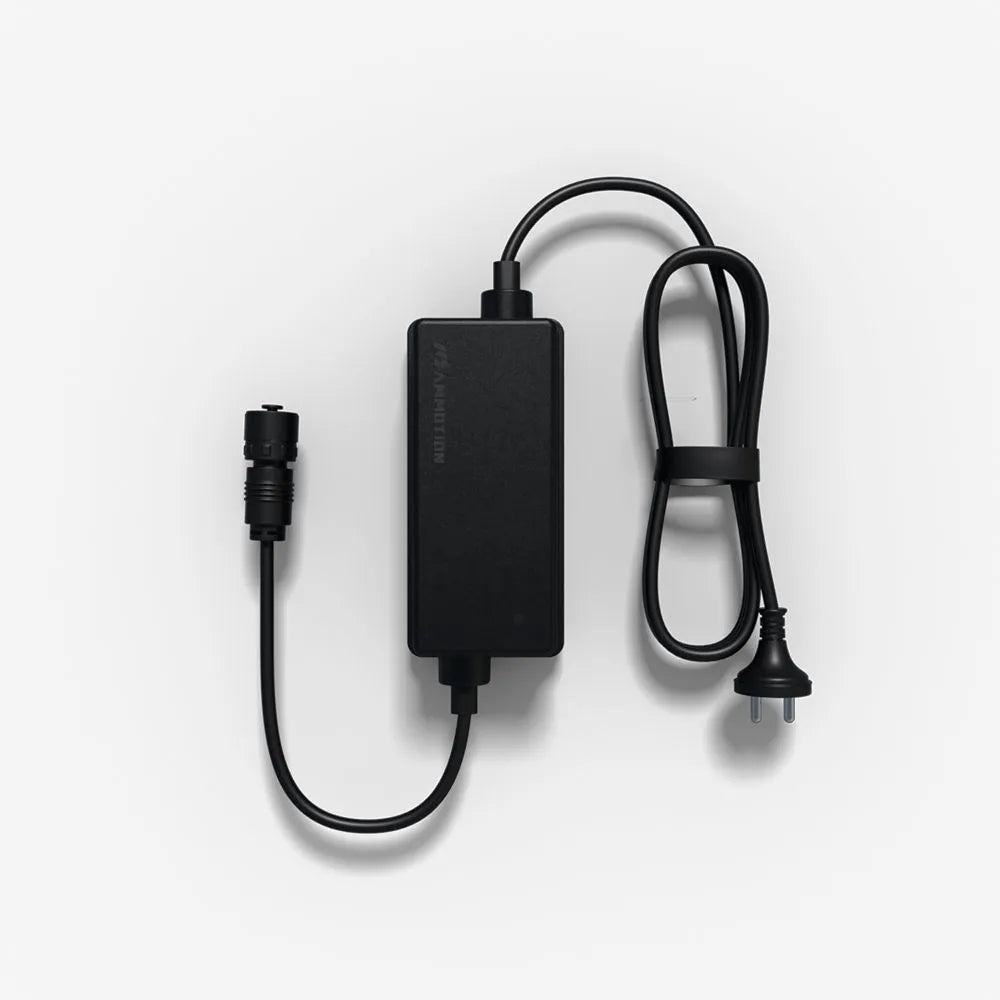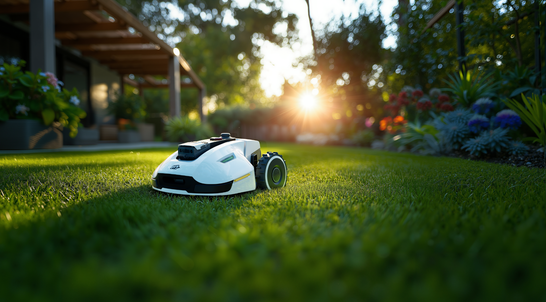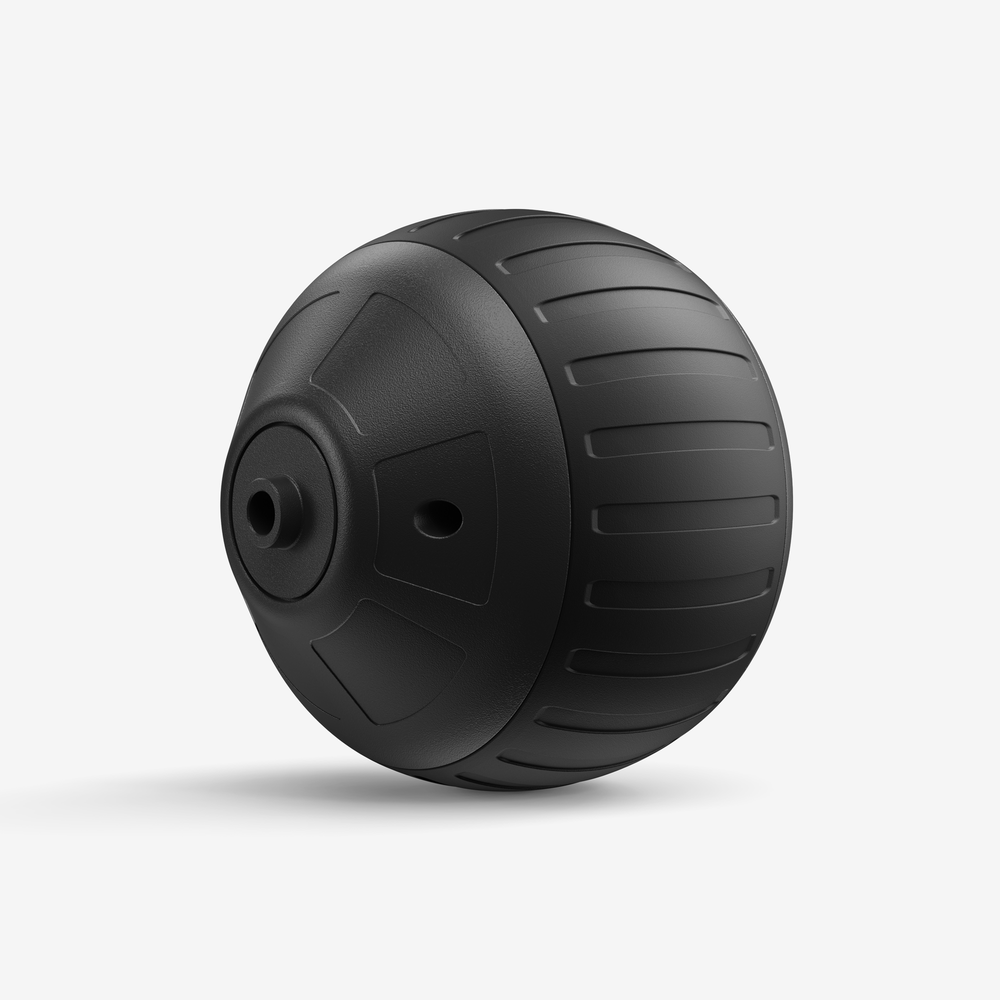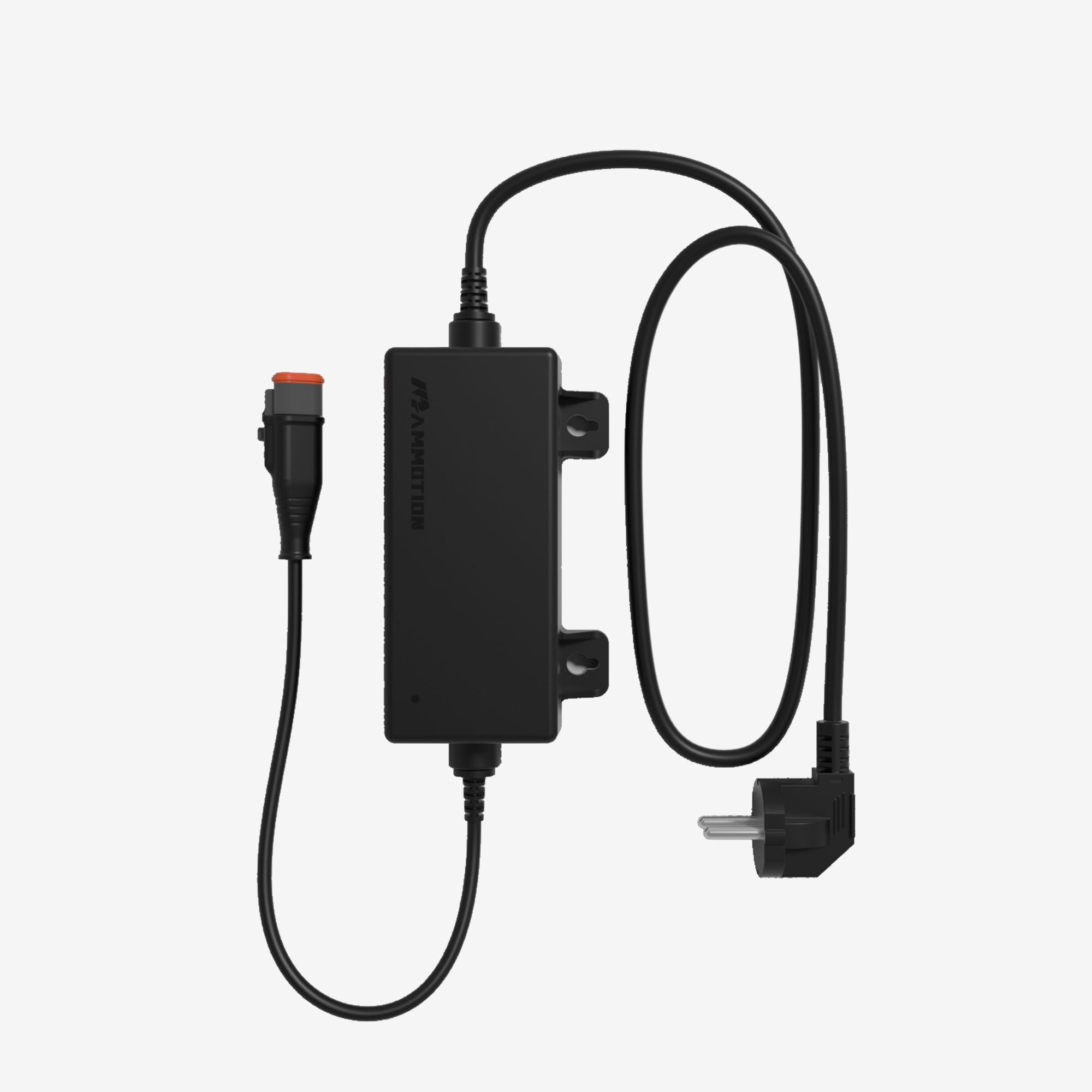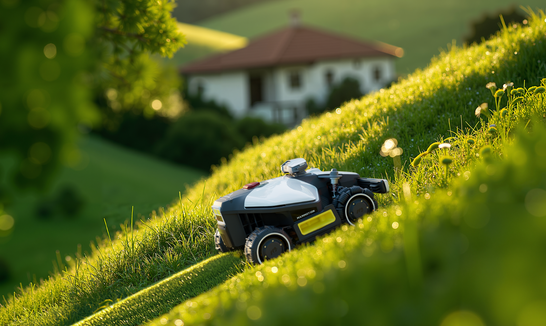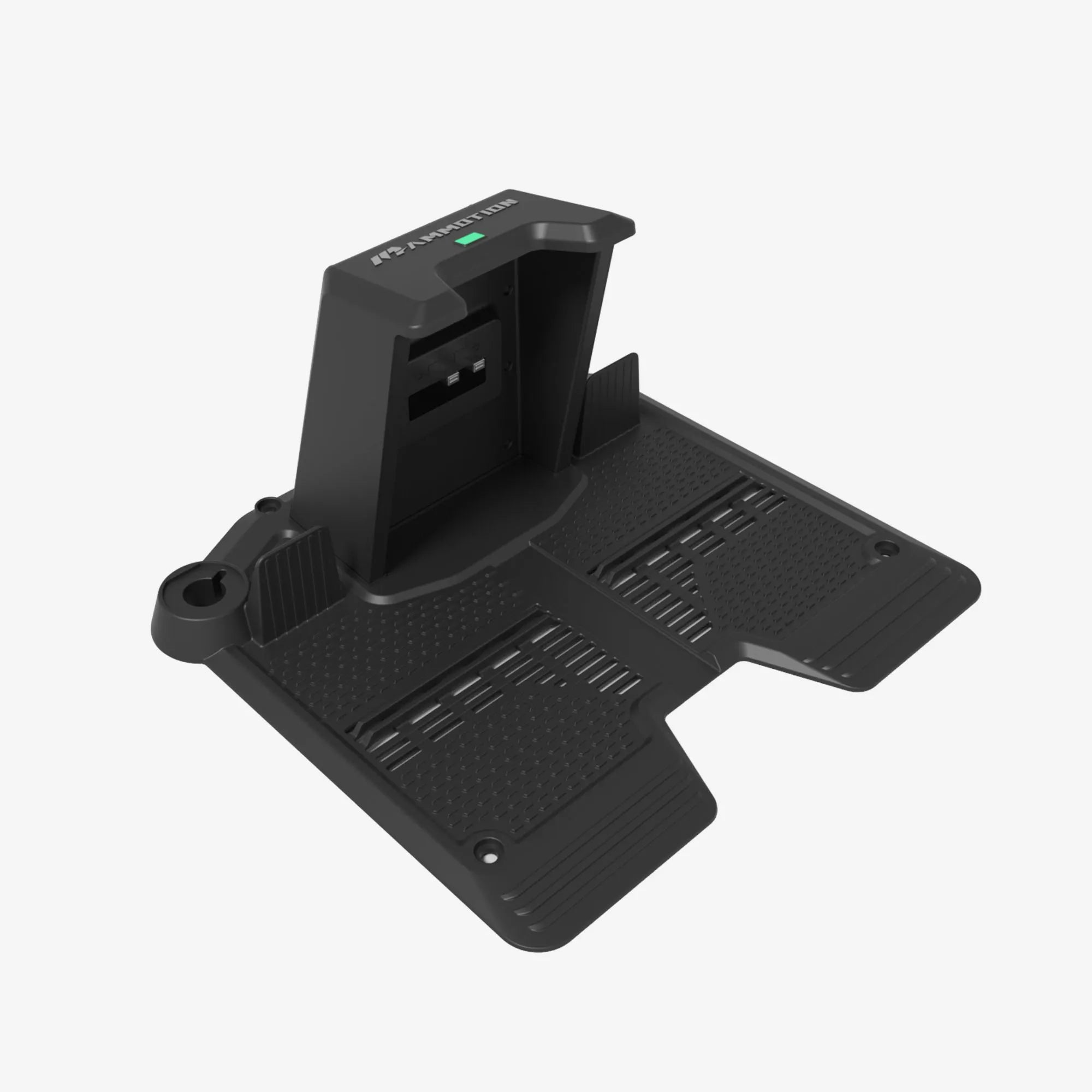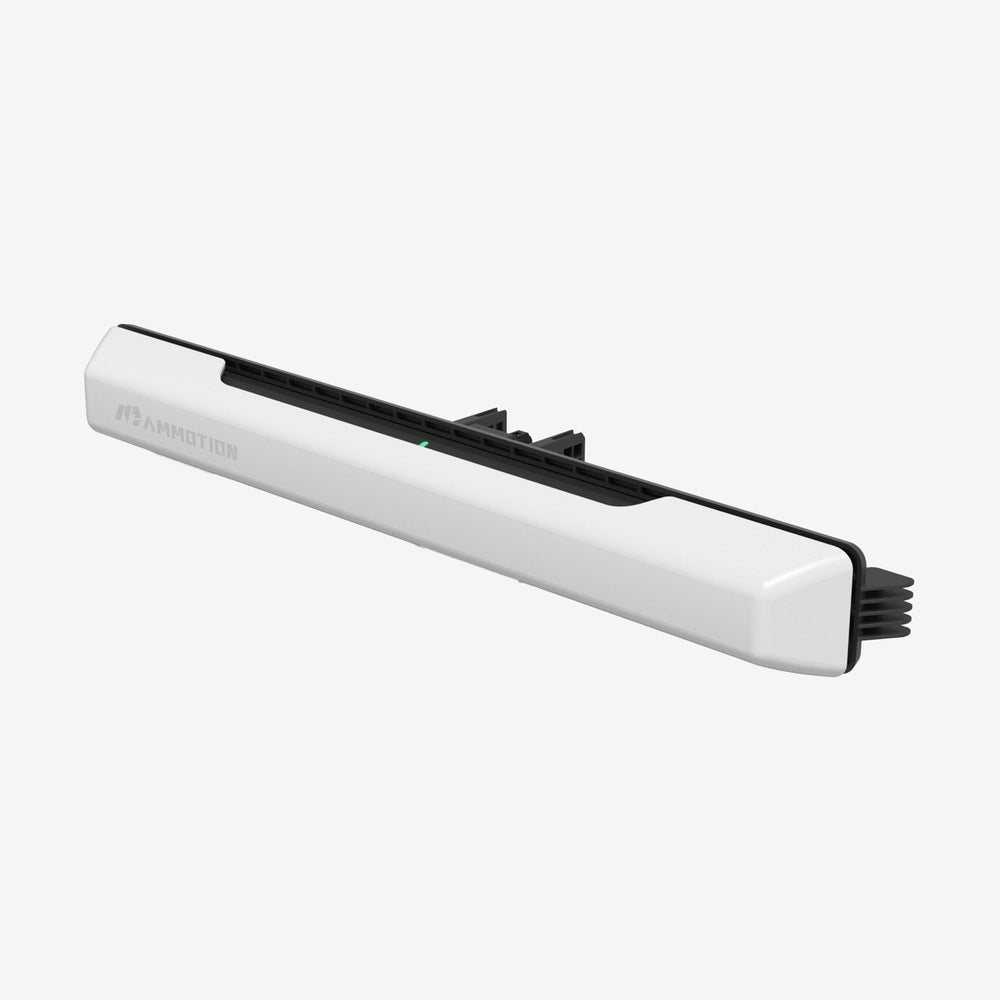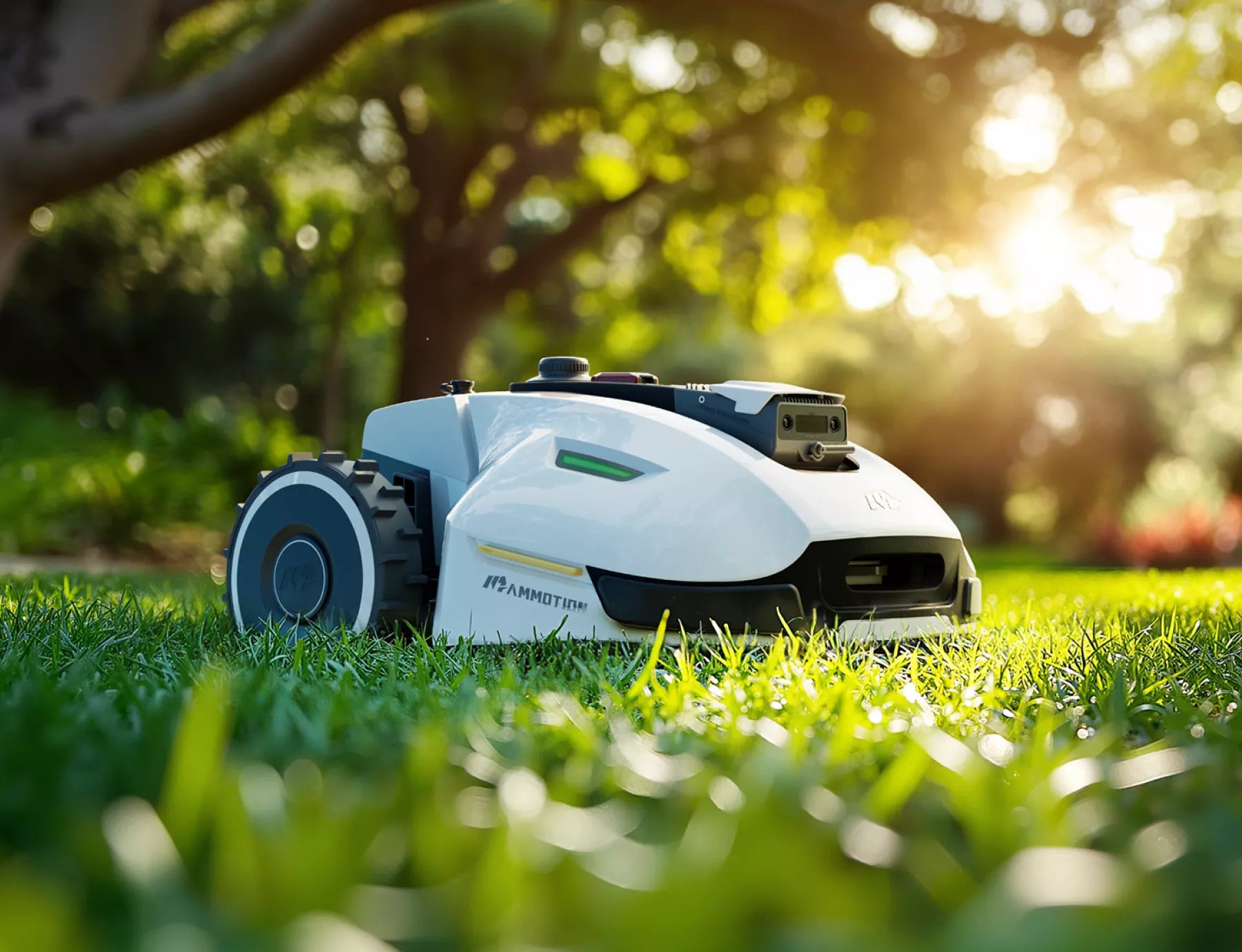Imagine it’s a crisp Saturday morning — the birds are singing, the kettle’s just boiled, and your lawn is calling for a trim. But here’s the catch: with so many different types of lawn mowers on the market, which one is actually right for your garden? Whether you’re maintaining a small suburban patch or a sprawling countryside lawn, the type of mower you choose can make all the difference between a weekend chore and a perfectly manicured, envy-worthy lawn.
In the UK, choosing the right mower isn’t just about price or power, it’s about finding the perfect match for your lawn’s size, slope, and your personal comfort level with maintenance and automation.
This guide walks you through everything you need to know about different lawn mower types, including manual, electric, petrol, and smart robotic models. You’ll learn how each type works, what kind of lawn it suits best, and why high-tech options like robotic mowers are quickly becoming the go-to choice for UK homeowners who value convenience, sustainability, and precision.
Whether you’re a first-time buyer or considering an upgrade, by the end of this guide, you’ll know exactly which mower fits your garden — and your lifestyle.
Part 1. Why Understanding the Different Types of Lawn Mowers Matters
Choosing different lawn mowers isn’t just about how fast it cuts grass — it’s about how well it suits your garden’s unique needs. Understanding the different types of lawn mowers helps you make a smart, long-term investment that saves time, energy, and even money in maintenance over the years.
1. Matching Mower Type to Your Lawn
Every lawn has its own personality. Small, flat lawns may thrive with a simple manual push mower, while larger, uneven terrains call for self-propelled or ride-on models. If your garden has tight corners or intricate borders, a hover mower or robotic mower with precision navigation can save you hours of effort.
For example, UK homeowners in suburban areas with 200–500 m² lawns often prefer lightweight electric rotary mowers for convenience. Meanwhile, countryside users with sprawling gardens benefit from ride-on or robotic mowers, which can handle slopes up to 75% effortlessly.
2. Power Source and Maintenance
The power source you choose — whether electric, battery, petrol, or robotic — determines not only performance but also the upkeep.
- Electric corded mowers are affordable and low-maintenance but limited by cable length.
- Battery-powered mowers offer mobility and eco-friendliness, ideal for mid-sized UK lawns.
- Petrol mowers remain powerful options for large, thick grass areas but require regular fuel and oil maintenance.
- Robotic lawn mowers, such as Mammotion’s LUBA series, run automatically and recharge themselves, giving you a consistently neat lawn with zero manual effort.
3. Adapt to the Local Environment
UK weather is famously unpredictable — one minute sunny, the next pouring rain. This makes mower selection even more critical. Lawns in wetter regions (like Wales or Northern England) need machines with strong traction and waterproof designs, while dry, flatter southern gardens can benefit from lighter, battery-powered or hover models.
Modern robotic mowers, particularly those with all-wheel drive and AI obstacle detection, adapt perfectly to British conditions — cutting safely in drizzle, on slopes, and across uneven terrain without damaging the grass.
Part 2. What Are Different Kinds of Lawn Mowers?
Understanding the different classifications of different types of lawnmowers helps you find the right balance between power, convenience, and performance.
Here’s a quick breakdown of how mowers are grouped by their power source, drive system, cutting system, and operation mode — so you can pick the perfect one for your UK garden.
1. By Power Source
| Type | Description | Typical Models / Features |
|---|---|---|
| Manual Reel Mower | Powered entirely by human force; blades spin as you push. | Best for small, flat lawns; eco-conscious users. |
| Electric Corded Mower | Runs on electricity via a power cable; provides consistent power output. | Ideal for small gardens near a power outlet. |
| Cordless Battery Mower | Uses rechargeable lithium-ion batteries; offers cordless convenience and freedom. | Great for small to medium lawns or areas without nearby power supply. |
| Petrol / Gas Mower | Powered by a gasoline engine; offers strong torque and cutting performance. | Best suited for large lawns, dense or tall grass, and professional maintenance. |
| Robot Lawn Mower | Uses GPS, RTK, or AI vision for autonomous navigation and automatic mowing. | Perfect for smart homes and fully automated lawn maintenance. |
2. By Drive System
| Type | Description | Typical Models / Features |
|---|---|---|
| Push Mower | Moves only when manually pushed. | Low cost, simple design. |
| Self-Propelled Mower | Equipped with a motorized drive system for automatic forward motion. | Less effort, ideal for uneven terrain. |
| All-Wheel Drive (AWD) | Power delivered to all four wheels. | Great traction on slopes or rough terrain. |
3. By Cutting System
| Type | Description | Typical Models / Features |
|---|---|---|
| Rotary Mower | Uses a horizontally spinning blade to cut grass. | Versatile, suitable for most lawns. |
| Cylinder / Reel Mower | Has multiple vertical blades that cut like scissors. | Precise cut, ideal for fine lawns. |
| Hover Mower | Floats on an air cushion above the ground. | Lightweight, easy to maneuver on uneven surfaces. |
4. By Operation Mode
| Type | Description | Typical Models / Features |
|---|---|---|
| Manual Control | Operated and steered by a person. | Flexible and precise control. |
| Autonomous / Robotic | Uses GPS or AI systems to navigate and mow automatically. | Smart, time-saving, and low maintenance. |
5. By Special Functionality
| Type | Typical Models / Features |
|---|---|
| Waterproof Model | Can operate in damp or rainy conditions. |
| Multi-Zone Management | Can define and manage multiple mowing zones. |
| Smart Obstacle Avoidance (AI Vision / Ultrasonic Sensors) | Detects and avoids toys, trees, pets, or garden furniture. |
| Slope-Ready / AWD Model | Handles slopes up to 45° or more. |
| Striping Feature | Creates professional lawn stripes like on football fields. |
Part 3. The Main Types of Lawn Mowers Explained
Choosing the right lawn mower isn’t just about power—it’s about matching your mower to your garden’s size, shape, and conditions. From classic push models to cutting-edge robotic systems, here’s a breakdown of the main types used across UK homes, with insights into real-world performance, maintenance needs, and price expectations.
1. Push Mowers (Manual & Cylinder)
Push mowers rely solely on your strength. The cylinder—or “reel”—mower slices grass cleanly with a scissor-like motion using multiple vertical blades, creating a fine, even finish often favoured by traditional gardeners and bowling-green enthusiasts.
Best for: Small, flat lawns under 300 m²
Popular brands: Allett, Hayter, Webb
Typical price: £80 – £250
Pros
- Quiet and emission-free — no batteries or fuel required
- Delivers a beautifully striped, manicured look
- Minimal maintenance and running cost
Cons
- Demands physical effort
- Struggles with long, coarse, or damp grass
Insight: Perfect for gardeners who enjoy a workout and want that traditional, close-cut British lawn without using electricity or petrol.
2. Rotary Lawn Mowers (Electric or Petrol)
Rotary mowers use a single horizontal blade that spins at high speed—an all-rounder design that can tackle varied grass lengths and even light weeds.
Best for: Medium to large lawns with mixed terrain
Popular brands: Honda (HRX series), Bosch, Toro
Typical price: £130 – £350 (electric), £500 – £900 + (petrol)
Pros
- Versatile and powerful; copes well with uneven or overgrown lawns
- Easy to find spare parts and servicing
- Available in corded, cordless, and petrol versions
Cons
- Louder than electric or robotic models
- Heavier and less eco-friendly (for petrol types)
Insight: Rotary mowers remain the UK’s most popular choice for a reason—they’re reliable, adaptable, and suit almost any garden type.
3. Hover Mowers
Hover mowers glide on a cushion of air, making them extremely easy to manoeuvre around flower beds, slopes, and tight corners.
Best for: Small or mid-size gardens with uneven or sloped ground
Popular brands: Flymo, Black + Decker
Typical price: £150 – £300
Pros:
Lightweight and agile
Excellent for irregular or multi-level lawns
Compact and easy to store
Pros
- Lightweight and agile
- Excellent for irregular or multi-level lawns
- Compact and easy to store
Cons
- Limited cutting power; not suited for large lawns
- Narrow cutting width = more passes
Insight: A top pick for UK homeowners with hilly or oddly shaped gardens—especially where manoeuvrability matters more than brute strength.
4. Self-Propelled Lawn Mowers
These mowers drive themselves forward at a steady pace—you just steer. They’re ideal for users who want rotary power without physical strain.
Best for: Medium to large lawns, including gentle slopes
Popular brands: Honda, Husqvarna, Toro
Typical price: £450 – £850 depending on drive type (front/rear/AWD)
Pros
- Reduced effort, consistent results
- Great traction on inclines
- Durable and built for frequent use
Cons
- Heavier than standard push models
- Higher purchase cost and occasional drive-belt servicing
Insight: Perfect for homeowners mowing weekly—especially if you value smooth motion and uniform cutting over light weight.
5. Ride-On & Lawn Tractors
Ride-on mowers are the go-to for those maintaining vast gardens or estates. They combine speed, comfort, and serious cutting power.
Best for: Lawns over 2 000 m², estates, parks, or sports grounds
Popular brands: John Deere, Husqvarna, Cub Cadet
Typical price: £1 200 – £3 500 + (up to £5 000 + for pro models)
Pros:
Fast and efficient for large areas
Comfortable driving experience
Wide cutting decks (up to 120 cm) save hours
Pros
- Fast and efficient for large areas
- Comfortable driving experience
- Wide cutting decks (up to 120 cm) save hours
Cons
- Expensive and bulky
- Requires regular servicing and storage space
Insight: If you’re managing acres rather than metres, this is the most time-efficient option—worth the investment for frequent, large-scale mowing.
6. Robotic Lawn Mowers (Smart & Automated)
The cutting-edge evolution of lawn care—robotic mowers work autonomously using GPS, RTK, or AI Vision technology. They map, mow, recharge, and even avoid obstacles completely on their own.
Best for: Busy homeowners or smart-home users who want zero manual work
Popular brands: Mammotion LUBA 2 AWD
Typical price: £500 – £2 000 (mid-range), £2 000 – £5 000 + (premium AI Vision)
Pros
- Fully automatic and whisper-quiet operation
- Wire-free setup with advanced GPS or AI mapping
- Eco-friendly and energy-efficient
- Continuous trimming keeps grass perfectly level
Cons
- Higher upfront cost
Insight: Flagship models like Mammotion LUBA 2 AWD handle slopes up to 80 %, mow 5 000 m² per day, and operate entirely wire-free—making them ideal for modern UK gardens seeking automation and sustainability.
Quick Summary Table
| Type | Best For | Power Source | Typical Price | Key Benefit |
|---|---|---|---|---|
| Push / Cylinder | Small, flat lawns | Manual | £80 – £250 | Traditional, quiet, eco-friendly |
| Rotary | Medium lawns | Electric / Petrol | £130 – £900 | Versatile, powerful |
| Hover | Uneven small lawns | Electric | £150 – £300 | Lightweight, agile |
| Self-Propelled | Medium–large lawns | Electric / Petrol | £450 – £850 | Easy to use on slopes |
| Ride-On | Very large areas | Petrol / Battery | £1,200 – £5,000+ | Fast, high-capacity |
| Robotic | Smart or large, hands-off users | Battery (AI / GPS) | £500 – £5,000+ | Fully automatic & quiet |
Part 4. Why Robot Lawn Mower Is a Smart Investment
If your garden is medium to large, has slopes, obstacles, or multiple zones, investing in a robotic mower like Mammotion’s LUBA 2 AWD will save you countless hours while delivering a perfectly manicured lawn — rain or shine.
It’s not just a mower; it’s a long-term smart investment for effortless lawn perfection.
| Aspect | Robot Mower Advantage | How It Benefits UK Homeowners |
|---|---|---|
| Time & Effort | Fully autonomous operation — no manual work. | Saves up to 2 hours per week of lawn maintenance time. |
| Precision & Coverage | GPS/RTK navigation ensures even cutting and no missed spots. | Perfect for complex UK gardens with flowerbeds or curved edges. |
| Weather Adaptability | Works in light rain and damp grass conditions. | Ideal for UK’s unpredictable weather. |
| Slope Handling | AWD systems handle slopes up to 75% (≈37°). | Suits hilly regions like Wales or Northern England. |
| Cost Efficiency | Low running costs (no fuel, minimal servicing). | Saves £150–£300/year in fuel and maintenance. |
| Eco Performance | Zero emissions, low energy use. | Supports sustainable lawn care. |
| Smart Connectivity | Controlled via app or voice command (Alexa/Google). | Manage mowing zones, schedules, and patterns remotely. |
| Example | Mammotion LUBA / YUKA series | Offers AI obstacle detection, RTK precision, and multi-zone mapping for all garden types. |
Conclusion
Choosing the right mower depends on your garden’s size and terrain. While manual and rotary models suit smaller lawns, smart robotic mowers like Mammotion LUBA 2 AWD offer effortless, eco-friendly care for complex UK gardens. With AI navigation, RTK precision, and all-wheel drive, they save time, handle slopes, and keep your lawn perfectly neat all year round.
Frequently Asked Questions
1. What are the most popular types of lawn mowers in the UK?
The most popular types in the UK are rotary mowers, hover mowers, and robotic lawn mowers. Rotary models dominate suburban gardens due to versatility, while hover mowers are perfect for small, uneven lawns. Robotic mowers are increasingly popular for homeowners who want automated lawn care.
2. What type of lawn mower is best for thick or long grass?
For thick or overgrown lawns, a petrol rotary mower or a high-power cordless mower with adjustable cutting heights is most effective. These models have stronger torque and sharper blades that can handle long, damp grass often found in UK spring and autumn.
3. What is the difference between rotary and cylinder lawn mowers?
A rotary mower cuts using a horizontally spinning blade, ideal for general garden maintenance and uneven surfaces. A cylinder mower uses vertically rotating blades that trim grass cleanly, giving a fine, striped finish — best suited for short, even lawns and ornamental gardens.
4. Which type of lawn mower requires the least maintenance?
Cordless and robotic lawn mowers require the least maintenance because they don’t use oil, fuel, or spark plugs. Modern robotic models like the Mammotion LUBA Mini even update software automatically and self-charge after every session.
5. Are hover mowers good for large gardens?
Hover mowers are designed mainly for small or medium lawns. They glide on an air cushion, which makes them easy to manoeuvre but less suitable for large areas because of smaller cutting decks and less battery or cable range.
6. What is the most eco-friendly type of lawn mower?
The most eco-friendly options are manual reel mowers and robotic electric mowers. They produce zero emissions, use minimal energy, and reduce noise pollution — a sustainable choice for environmentally conscious UK homeowners.
7. What type of mower works best for damp or rainy conditions?
If you often mow in wet or rainy conditions, a water-resistant robotic mower or a powerful petrol mower is best. Robotic models such as Mammotion LUBA 2 AWD are built with sealed motors and waterproof designs that allow safe mowing even in drizzle.
8. How do I choose between a self-propelled and a push mower?
Choose a self-propelled mower if your garden is large or sloped, as it reduces physical effort by powering the wheels. A push mower is ideal for small, flat lawns where manoeuvrability and cost-efficiency matter more than automation.
9. What are the advantages of a robotic lawn mower over traditional ones?
A robotic lawn mower saves time, energy, and resources. It can mow daily for consistent lawn health, works quietly, and handles complex terrains. Unlike traditional mowers, it doesn’t require manual operation — making it ideal for busy UK homeowners who value convenience.
10. What are different lawn mower blades?
They are the various blade types designed for different mowing results — mainly standard, mulching, high-lift, low-lift, and gator (3-in-1) blades.


